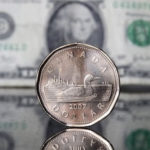Friday’s trade saw CHF/JPY within the range of 132.32-138.99. The pair closed at 137.19, gaining 1.36% on a daily basis and 17.39% for the whole week. On Thursday the cross soared to the highest level on record at 157.48.
On Monday (January 19th) CHF/JPY may be influenced by a number of fundamentals as listed below.
Fundamentals
Switzerland
Producer and Import prices
The index of producer and import prices in Switzerland probably declined 1.5% in December from a year ago, according to the median experts’ estimate. In November producer prices fell at an annual rate of 1.6%, or the most since July 2012, when a 1.8% drop was recorded. Producer prices have been falling during the past 15 months. The index consists of two sub-indexes, the producer price index (PPI) and the index of import prices (IIP). The PPI refers to goods produced and sold domestically or exported by Swiss companies. These goods include raw materials, starting materials, semi-finished and finished products. The IIP has a similar structure to that of producer prices, reflecting the prices of imported goods (price before duty, VAT). The combined index of producer and import prices generally reflects changes in both indexes, by summing up their values. The Swiss Federal Statistical Office is scheduled to release the official figures at 8:15 GMT on Monday. A larger-than-expected drop in the index will certainly reduce the appeal of the Swiss franc.
EUR/CHF parity on the horizon?
Credit Suisse analysts project that EUR/CHF will probably reach parity within three months, following the stunning decision by the Swiss central bank to abandon the franc ceiling, which led to the lowest level on record for the pair. The institution also expect that the EUR/USD cross will probably depreciate to 1.1200, a revised down estimate from 1.1500 previously.
Japan
Consumer Confidence
Confidence among consumers in Japan probably remained almost unchanged in December, with the corresponding index coming in at a reading of 38.0, up from 37.7 in November. The latter has been the lowest index level since April, when it was reported at 37.0.
The index is based on a monthly survey that covers almost 4 700 households consisting of more than two persons. The questionnaire features four subjects – consumer perceptions of overall livelihood, income growth, employment and willingness to buy durable goods. Readings of 50.0 point to neutrality. Values above 50.0 indicate optimism, while values below 50.0 are indicative of lack of confidence. In case the index rose more than projected, this might provide support to the local currency. Japans Cabinet Office is to release the official data at 5:00 GMT on Monday.
Industrial output – final estimate
The final estimate of the index of industrial production in Japan probably confirmed the preliminary data of a 0.6% contraction in November compared to a month ago, as reported on December 25th. In October output expanded at a monthly pace of 0.4%.
In annual terms, final industrial production probably also confirmed the preliminary estimate, pointing to a 3.8% drop in November. If so, this would be the most significant annual decline since June 2013, when production fell at a pace of 4.6%. Annualized industrial output contracted at a pace of 0.8% in October.
The index, reflecting business cycle, measures the change in overall inflation-adjusted value of output in sectors such as manufacturing, mining and utilities. In case industrial output shrank more than anticipated, this would mount selling pressure on the Japanese yen. The Ministry of Economy, Trade and Industry is to publish the official industrial data at 4:30 GMT.
Japanese retail Forex traders seen to lose appetite
According to Gaitame.com Research Institute Ltd., Japanese retail currency traders will probably lose appetite for trading, following the Swiss National Banks decision to give up the EUR/CHF minimum exchange rate on Thursday.
”It’s inevitable that investment appetite will shrink,” said Takuya Kanda, a senior researcher at Gaitame.com Research Institute, a unit of a Tokyo-based company that offers investors the chance to borrow money to fund their trades, cited by Bloomberg. ”There were quite a few people who got hit by the slides in euro-dollar, euro-yen as the euro plunged immediately after SNB’s decision.”
In Japan over-the-counter Forex trading totaled JPY 576 trillion (USD 4.9 billion) in November, as EUR/CHF trades accounted for JPY 380 billion and CHF/JPY cross accounted for JPY 343 billion, data compiled by the Financial Futures Association of Japan revealed.
Pivot Points
According to Binary Tribune’s daily analysis, the central pivot point for the pair is at 136.17. In case CHF/JPY manages to breach the first resistance level at 140.01, it will probably continue up to test 142.84. In case the second key resistance is broken, the pair will probably attempt to advance to 146.68.
If CHF/JPY manages to breach the first key support at 133.34, it will probably continue to slide and test 129.50. With this second key support broken, the movement to the downside will probably continue to 126.67.
The mid-Pivot levels for Monday are as follows: M1 – 128.09, M2 – 131.42, M3 – 134.76, M4 – 138.09, M5 – 141.43, M6 – 144.76.
In weekly terms, the central pivot point is at 136.24. The three key resistance levels are as follows: R1 – 158.48, R2 – 179.76, R3 – 202.00. The three key support levels are: S1 – 114.96, S2 – 92.72, S3 – 71.44.





